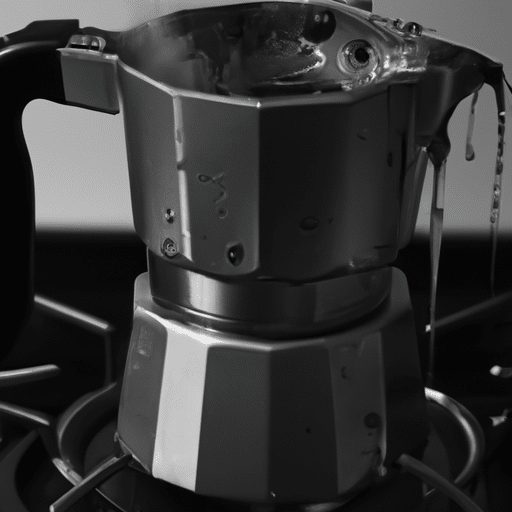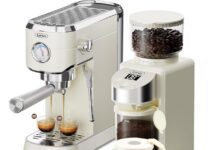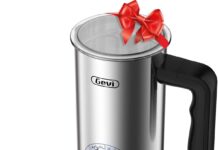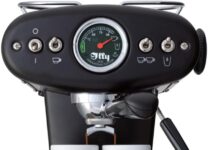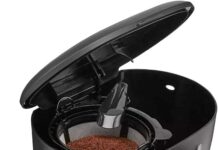Have you ever experienced the frustration of watching your beloved Bialetti pot overflow, leaving behind a coffee-stained mess on your stovetop? We’ve all been there, wondering what could be causing this minor yet irksome inconvenience. In this article, we will explore the possible reasons behind this overflow phenomenon, helping you understand and remedy the situation so that you can enjoy your coffee without any unwanted surprises. So, let’s get to the bottom of this brewing mystery!
Possible causes of Bialetti pot overflow
Excessive heat
One of the possible causes of Bialetti pot overflow is excessive heat. This can occur if you use a high flame or heat setting, which can lead to the water boiling too rapidly and causing the pot to overflow. It is important to find the right balance and adjust the heat accordingly to prevent this issue.
Uneven distribution of heat
Uneven distribution of heat can also contribute to overflow in your Bialetti pot. This can occur if the gas burner is not properly aligned with the pot, resulting in uneven heating. Similarly, electric stoves with uneven heating elements or using an induction stove with incompatible material can cause uneven distribution of heat and potentially lead to overflow.
Using too much coffee
Using too much coffee can overload the coffee funnel and result in overflow. It is essential to follow the recommended level for filling the coffee funnel and avoid overfilling it. Additionally, not leaving enough space for coffee expansion can also lead to overflow. It is important to strike the right balance between using enough coffee for flavor and aroma and leaving enough space for the coffee to expand during the brewing process.
Using incorrect grind size
The grind size of the coffee you use in your Bialetti pot can also contribute to overflow. Using too fine of a grind size can slow down the brewing process and cause the water to overflow the pot. On the other hand, using too coarse of a grind size can lead to a fast extraction, which also increases the chance of overflow. Finding the right grind size for your Bialetti pot is crucial to prevent this issue.
Damaged or worn-out gasket
A damaged or worn-out gasket can compromise the seal of your Bialetti pot, leading to potential overflow. If the gasket is not properly sealed, it may allow water to leak out during the brewing process. Cracks or deterioration in the gasket can also cause similar problems. Regularly inspecting and replacing the gasket when necessary can help prevent overflow issues.
Improper assembly
Improperly assembling your Bialetti pot can also contribute to overflow. Not screwing the top and bottom parts tightly can result in water leakage and overflow during the brewing process. Additionally, placing the gasket incorrectly can compromise the seal and lead to overflow. It is crucial to follow the assembly instructions provided with your Bialetti pot to ensure proper assembly and avoid overflow.
Using low-quality or old coffee
The quality of the coffee you use can also affect the likelihood of overflow. Stale or expired coffee beans may release excess moisture during the brewing process, leading to overflow. Coffee beans with excess oil or moisture can also contribute to this issue. Using fresh, high-quality coffee beans and ensuring proper storage can help minimize the risk of overflow.
Improper water-to-coffee ratio
The water-to-coffee ratio plays a significant role in the brewing process and can affect the likelihood of overflow. Using too much water in relation to the amount of coffee can result in overflow, as the pot may not have enough capacity to accommodate the excess liquid. Conversely, not using enough coffee can lead to a fast extraction and potential overflow. Following the recommended water-to-coffee ratio provided by Bialetti can help prevent this issue.
Using the wrong Bialetti pot size
Using the wrong size of Bialetti pot can also contribute to overflow. Each Bialetti pot size is designed to accommodate a specific amount of coffee and water. Using a pot that is too small for the desired amount of coffee can result in overflow during the brewing process. It is important to ensure you are using the correct Bialetti pot size for your brewing needs to avoid overflow issues.
Clogging in the coffee funnel
Clogging in the coffee funnel can obstruct the flow of water and contribute to overflow. Coffee grounds can accumulate and block the filter holes, preventing proper water drainage. Additionally, residue buildup in the funnel can also impede the smooth flow of water and increase the likelihood of overflow. Regularly cleaning and maintaining the coffee funnel can help prevent clogging and alleviate overflow issues.
In conclusion, there are several possible causes of Bialetti pot overflow. These include excessive heat, uneven distribution of heat, using too much coffee, using incorrect grind size, a damaged or worn-out gasket, improper assembly, using low-quality or old coffee, improper water-to-coffee ratio, using the wrong Bialetti pot size, and clogging in the coffee funnel. By understanding these potential causes and taking preventive measures, such as adjusting the heat, following recommended guidelines, and proper maintenance, you can enjoy a hassle-free brewing experience with your Bialetti pot. Happy brewing!


